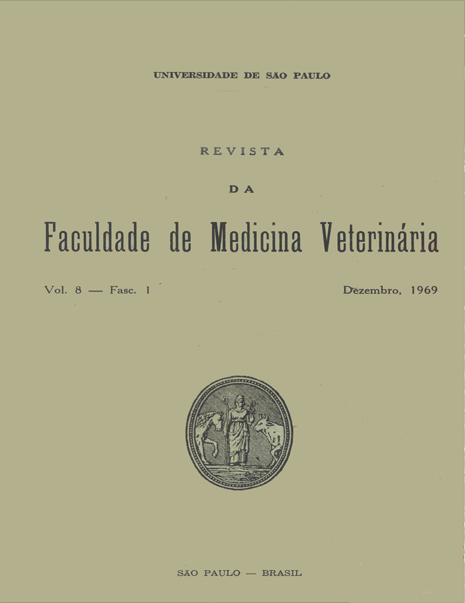Utilization of the male toad and ovarian hyperemia tests in the diagnosis of pregnancy in the female asses and mares bred to a jack
DOI:
https://doi.org/10.11606/issn.2318-5066.v8i1p139-147Keywords:
The article has no keywords.Abstract
The results with the utilization of the male toad and ovarian hyperemia tests for the diagnosis of pregnancy in she-asses and mares bred to a jack were described. In the studies with she-asses, 96 male toad tests, performed on Bufo marinus L., and 100 ovarian hyperemia tests in the immature rat, with blood drawn from 34 females 38 to 107 day following the date of the last breeding, were carried out simultaneously. With the male toad test only negative results could be obtained. So, of 96 tests, 44 were in agreement (not pregnant) and 52 not in agreement (false-negative reactions). These results proved the inefficiency of the test as a mean for the detection of pregnancy in she-asses. However, the accuracy was better with the ovarian hyperemia test; of 100 reactions, 85 were in agreement (41 positive and 44 negative) and 15 were not in agreement (10 false positive and 5 false negative). In the work with mares bred to a jack, 34 male toad tests and 34 ovarian hyperemia tests, with blood drawn from 16 females 39 to 97 day following the date of the last breeding, were also carried out simultaneously. The results proved the inefficiency of both tests. Of the 34 male toad reactions, 19 were negative and in agreement and 15 were false-negative; no positive result could also be shown. Of the 34 ovarian hyperemia tests, 22 were in agreement (3 positive and 19 negative) and 12 not in agreement (all false negative). These results appear to indicate that gonadotrophin is secreted at a reduced level, not only in pregnant she-asses but also in mares bred to a jack, as has been reported by other authors. The male toad test appeared to be less sensible to gonadotrophin than the ovarian hyperemia test in immature rat.


